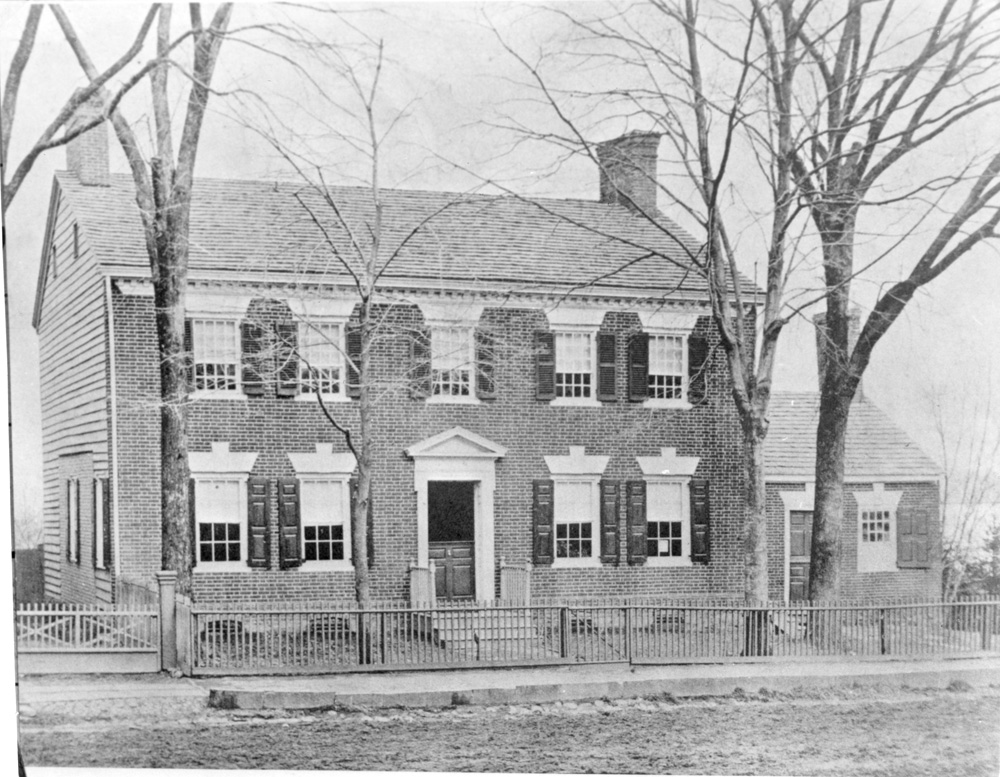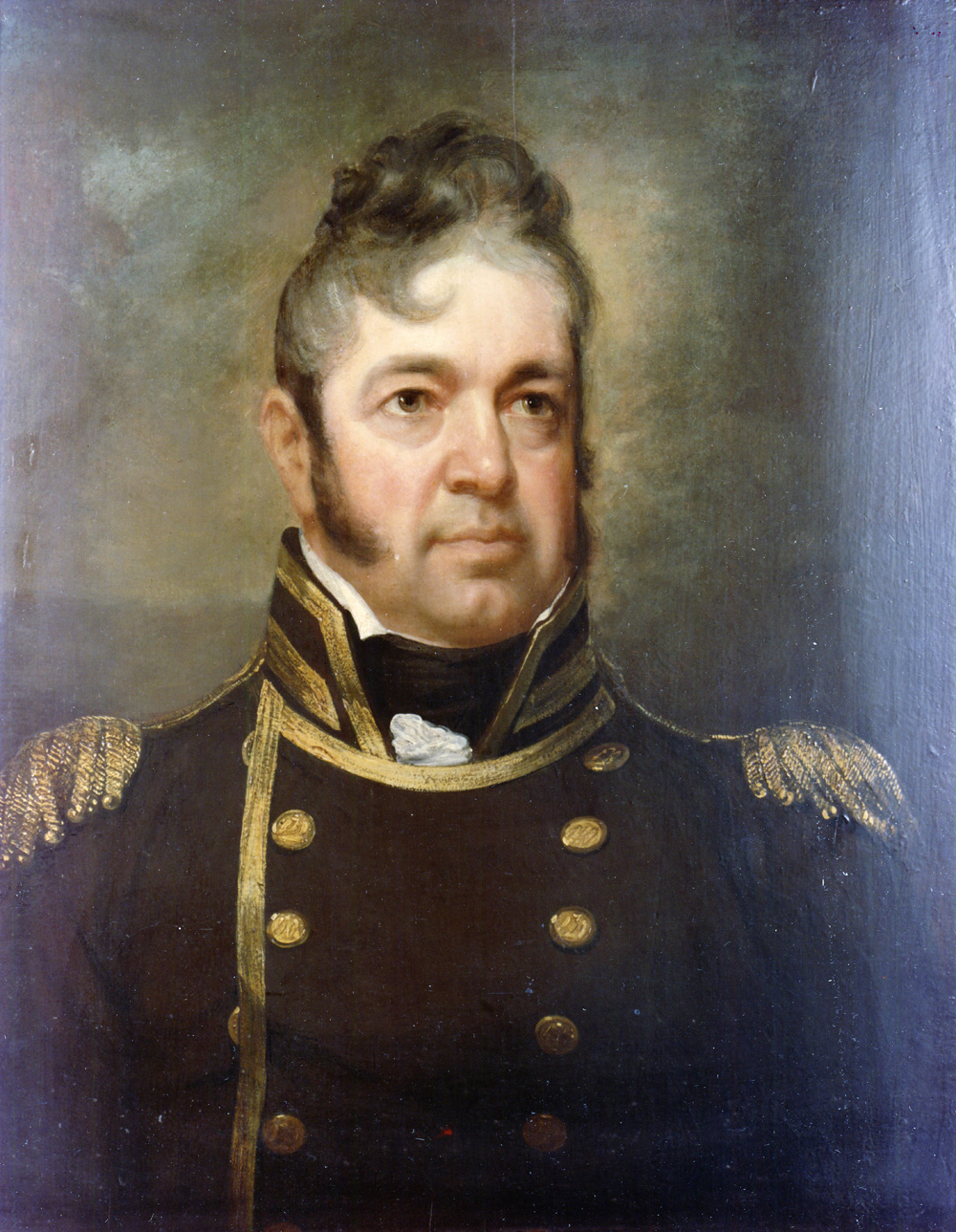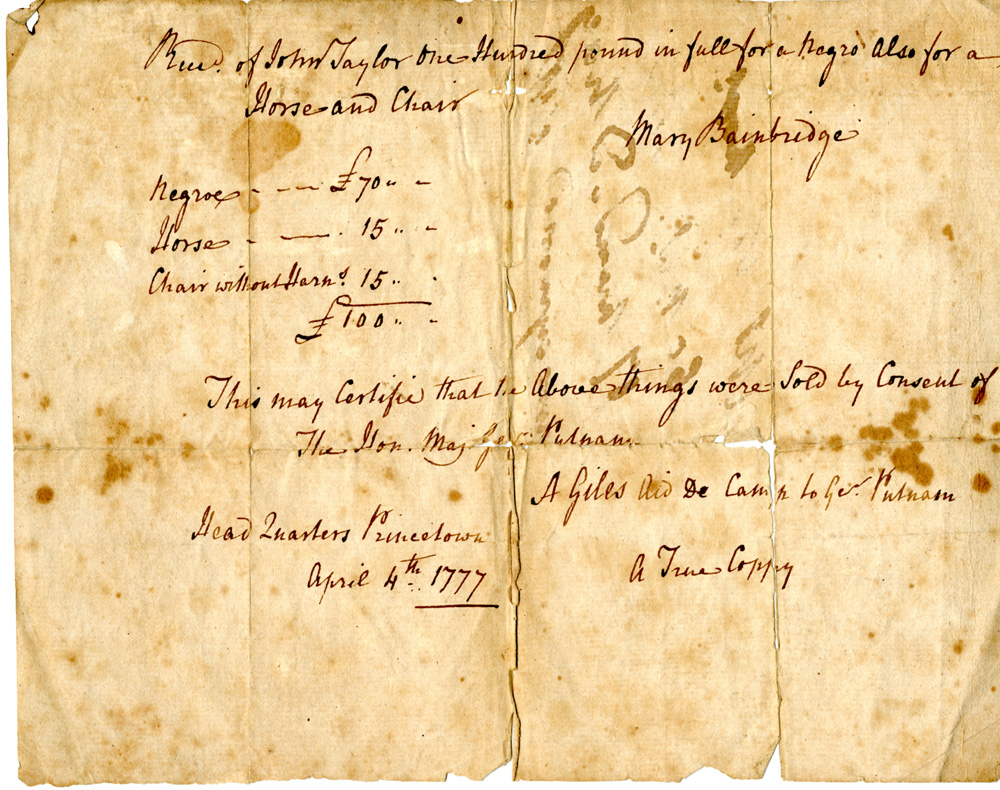
Part of The Growth of Nassau Street.

This house was built in 1766 by or for Job Stockton. Here he lived with his wife Mary until his death in 1771, running a tannery out of the house and its outbuildings. He died rather well-off in 1771 with an estate valued at just under 1,000 pounds. The inventory of his estate also indicates that an enslaved man named Peter lived in the house with the Stocktons. It seems likely that Peter may have slept in the kitchen, which would have stood in front of the present-day Garden Theatre.
Job had willed the house to his brother Robert, but because Robert already lived at an estate at Constitution Hill, he rented out the house for a few decades. The house takes its name from its most famous occupant, William Bainbridge, commander of the USS Constitution during the War of 1812, who was born in this house to Mary and Dr. Absalom Bainbridge sometime following their 1774 move-in. The Bainbridge family, loyal to the British throughout the Revolution, fled to the more sympathetic state of New York shortly after the war arrived in Princeton. The Bainbridges were also slaveholders, and this move, as well as their disloyalty to the Continental cause, provided an opportunity -- albeit a difficult and prolonged one -- for an enslaved man named Prime to reach freedom. More on Prime’s story can be found online at the Princeton and Slavery Project.
The house remained empty through the Revolution, and at one point locals petitioned in hopes of turning it into a tavern. By 1790, however, Stockton was leasing it again, first to a tanner named Ebenezer Wright, and then to an Abraham Voorhis. In 1799, he deeded the house to his son Dr. Ebenezer Stockton, who lived and practiced medicine here until his death. Dr. Stockton was a graduate of the College of New Jersey and had served as a Surgeon in the Continental Army.
Original Sections: Addition in the back of the house is not original to the building. The original kitchen to the east of the building no longer stands.
Present Use: Princeton University Art Museum gallery space

Bainbridge House, with the kitchen wing still standing, circa 1875.
Collection of the Historical Society of Princeton

Portrait of Commodore William Bainbridge by Gilbert Stuart, ca. 1814
Collection of the USS Constitution Museum

Receipt for Mary Bainbridge’s sale of the enslaved man, Prime, when the Bainbridge’s fled Princeton for New York, 1777
Collection of the Historical Society of Princeton